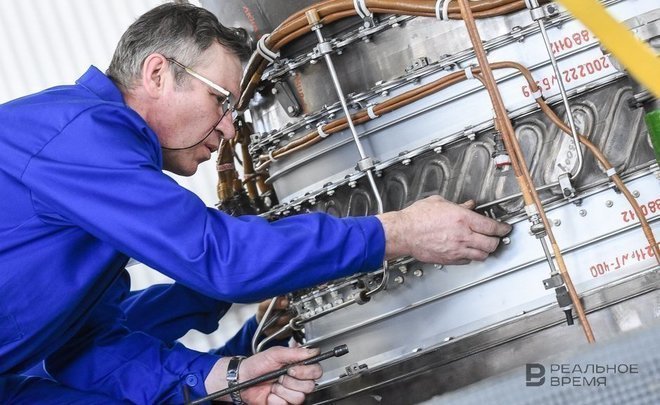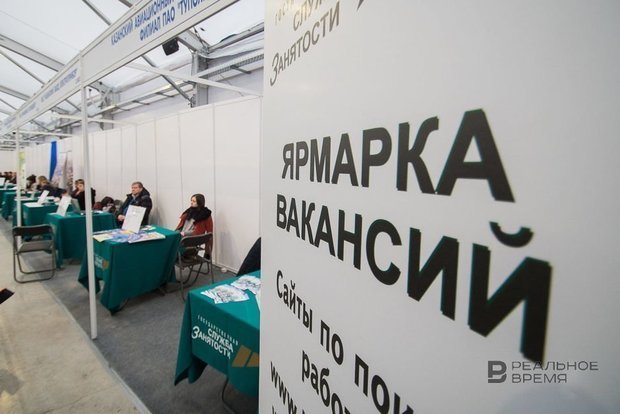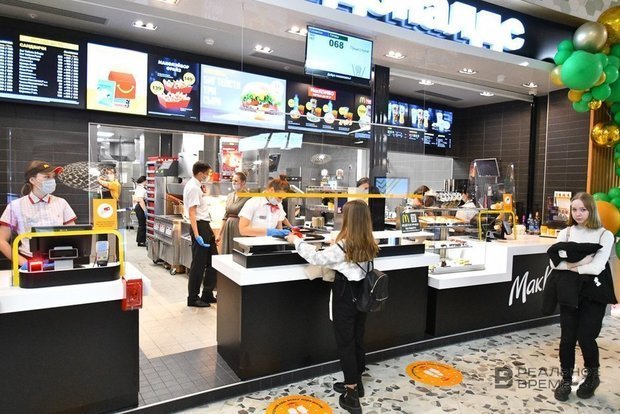Olga Belenkaya: ‘Enterprises are transferring employees to idle and part time’
Finam analyst — about hidden unemployment, industries affected by sanctions, and prospects of the labour market

Despite the withdrawal of many Western companies from Russia and a decline in GDP (-4%), forecasts of an increase in unemployment in the country did not materialise — its indicator, on the contrary, has fallen to a historic low (3,9%). Olga Belenkaya, the head of the macroeconomic analysis department at Finam, explains this paradox with state support measures, since for enterprises it is associated with the preservation of jobs. Nevertheless, in the author's column for Realnoe Vremya, the expert talks about the presence of hidden unemployment and other problems of the Russian labour market, while the situation in the regions is heterogeneous. For example, in Tatarstan, enterprises of three industries have suffered the most from sanctions: chemical production, rubber and plastic products, and the production of motor vehicles.
Unemployment at a minimum despite the withdrawal of companies
In the spring, there were expectations that unemployment in Russia would increase significantly this year due to sanctions, the withdrawal of many foreign companies from the Russian market, the disruption of production and logistics chains that stop the work of enterprises. For example, the May forecast of the Ministry of Economic Development assumed an increase in average annual unemployment from 4,8% in 2021 to 6,7% in 2022. However, so far, judging by official data, unemployment in Russia has even fallen to a historic low by May (3,9%) and so far (according to the most current Rosstat data for July) remains at this level. This is despite the overall decline in GDP (-4% (YoY) in the second quarter of 2022) with significantly deeper indicators of decline in certain industries: automotive industry (in July, a fall was 19% year-on-year), trade, metallurgy, chemistry, woodworking, furniture manufacturing, cinemas, marketing, and advertising.
This paradox is explained by state support measures (for enterprises, it is often linked to the preservation of the main share of jobs, the spread of assistance in retraining and employment to those who have not lost their jobs yet, but are at risk of dismissal), a high share of employment in state-owned enterprises and large companies, where they try to avoid mass layoffs, the relative rigidity of Russian labour legislation, a protracted process of layoffs in departed foreign companies.

Hidden unemployment in most affected industries
To a certain extent, we can talk about the presence of hidden unemployment in the affected industries. Enterprises prefer to transfer the employees to idle mode, part-time employment, refuse bonus payments and other forms of saving personnel costs.
According to Rosstat, in the second quarter of 2022, the largest amounts of underemployment were observed in the organisations engaged in the production of motor vehicles, trailers, and semi-trailers (10,1% of the employees of the list number worked part-time at the initiative of the employer and 29,3% of the employees of the list number were idle), 11% were idle in the organisations of air and space transport, in the organisations operating in the field of hotel business and catering enterprises — 10,5%. In postal communication and courier activities, 13% of the staff strength worked part-time, in the organisations providing other types of services — 10,7%. At furniture manufacturing enterprises, 24,3% of employees were on leave without pay in the second quarter. On average in Russia, this figure amounted to 8,6% of the staff strength.

But these measures can only be considered as a temporary solution in anticipation of a recovery of production volumes. Foreign companies continue to leave, and the period during which they were ready to keep staff and pay their salaries is coming to an end. At the same time, the business of their Russian counterparties is shrinking.
According to a survey by the AKAR research agency (quoted by Kommersant), a wave of layoffs took place in Russian advertising agencies from March to July on the market: 57% of agencies cut part of the staff, 46% of them kept only half of the staff.
In part, recovery attempts are taking place. For example, AvtoVAZ, after several months of downtime, switched to the production of simplified Lada models, resumed a 5-day working week and even announced the recruitment of new employees. In some cases, foreign companies that are leaving sell their Russian assets to new owners for a symbolic price (the most famous examples are the sale of McDonald's, Renault, Starbucks businesses), which allows at least to some extent to preserve the business of the enterprises themselves and their counterparties (McDonald's in Russia alone had 62 thousand employees and about 100 thousand were employed at suppliers' enterprises). But if the business does not recover in volumes comparable to the previous ones, companies will optimise the number of employees, which may lead to an increase in unemployment.

Risks of releasing 200-300 thousand employees
In early August, Minister of Economic Development Maksim Reshetnikov admitted that although unemployment is being at historic lows, the indicator is expected to increase in the autumn. The August forecast of the Ministry of Economic Development suggests that this year the average unemployment rate will coincide with last year's (4,8%), but since in the first half of the year its average value was significantly lower (4,07%), this means that it may increase in the second half of the year to about 5,5%. Next year, the Ministry of Economic Development predicts an average annual unemployment rate of 5,2%.
Deputy Prime Minister of the Government A. Belousov warns that there are risks of releasing 200-300 thousand employees or transferring them to various intermediate forms — part-time employment, reduced wages, forced vacations. This may happen before the end of the year. According to him, the risks of cuts are particularly high in the field of mechanical engineering, as well as in chemical production, where there is a drop in production by 10-17% and 9-10%, respectively. In our opinion, non-food trade is also at risk, where a decline is also measured in double digits. However, the low level of unemployment benefits in Russia — this year the maximum benefit is 12,792 rubles, which “shrinks” to 5,000 rubles in 3 months for another 3 months — in fact, leaves people with no options to remain unemployed for a long time. Some of the released employees may find work in similar Russian or Asian companies that will try to occupy the vacant market niches, some — in other industries, an increase in “informal” employment is possible.

According to HeadHunter, the number of vacancies in the labour market has decreased by 15% over the year, the number of resumes has increased by 22% over the same period. From February to July, the number of vacancies fell the most in insurance (-80%), civil service and non-profit organisations (-74%), automotive business (-63%), banks, investments and leasing (-55%). An increase in the number of vacancies is noted in the extraction of raw materials, construction, sales, transport and logistics. At the same time, on the part of applicants, the number of resumes in the IT and telecom sector has increased by 43% since February, while vacancies have been reduced by 7%.
The situation is certainly heterogeneous by region. The greatest pressure can be felt in industrial regions with a high concentration of enterprises from problematic industries. In Tatarstan, in April-June, the unemployment rate was only 2,4%, which is significantly lower than the average in Russia (4%). At the same time, the share of problematic industries in the region is quite high. Prime Minister of Tatarstan Aleksey Pesoshin named the three industries most affected by the sanctions: chemical production, rubber and plastic products, production of motor vehicles, specifying that the total share of the enterprises belonging to these industries is 28% of Tatarstan's industrial production. Therefore, employment support still requires attention.
Reference
The author's opinion may not coincide with the position of the editorial board of Realnoe Vremya.